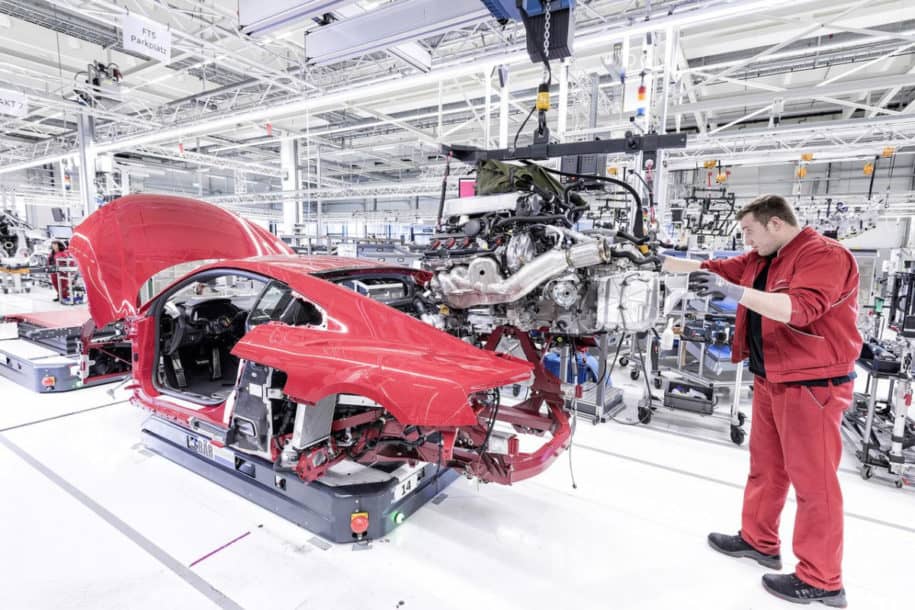The debate around industry 4.0 and smart manufacturing is involving an increasing number of execs worldwide, but that doesn’t mean they are all aware of the potential benefits of this trend for their companies. Same goes for the challenges to be tackled before a company can speak the industry 4.0 language.
Augmented reality is one of the cutting edge technologies involved in the industry 4.0 trend when talking about smart manufacturing, it is a technology which was seen just as a fancy toy until a few years back, but which has now reached the right level of maturity to be employed in a productive environment.
The truth is many actors in the industry field still feel like something big is going to happen on their shop floor in the next future, but they don’t know exactly when and what.
As for the when, we are much more advanced in the adoption of industry 4.0 practices than the non-experts may understand. There are so many investments and pilot projects going on out there which are speeding up the process of refining the technology and getting companies ready to improve their processes. So the right time is right now, at least for those who want to be the leaders.
As for the what, the range of potential applications is very wide, although some trends have emerged where augmented reality has proven to increase process and people performances as well as being effective at driving down costs in so many departments.
Critical issues in Industry 4.0 environments
Processes in the productive environment exhibit a number of critical issues that make operations less efficient, as well as more risky for technicians working in the field.
These are the areas of focus according to our experience:
- Human error: even the most experienced workers may suffer from an information overload resulting from excessive amounts of procedures to remember and difficulty in identifying the exact intervention points
- Inefficiencies: according to some empirical studies traditional assembly and maintenance operations require longer execution times compared to the same operations carried on with the assistance of augmented reality. Use of wrong tools, inadequate training received by technicians and poor to none access to operations’ analytics are some of the most recurring inefficiencies inside factories
- Cost: all of the above translates into higher workforce costs due to longer operations, recurring errors and damage to components due to incorrect procedures execution

Empirical studies and the evidence of performance improvement
There is a number of empirical studies conducted on the field in order to research the effectiveness of AR applied to industrial operations.
This set of studies compares the performance of two groups of workers carrying on the same assembly or maintenance operations, one group operates with the aid of AR instructions, the other group with the support of traditional printed instructions.
Among these studies, some of the most notable are “Augmented Reality Efficiency in Manufacturing Industry: A Case Study” by J. Saaski, T. Salonen, M. Liinasuo, J. Pakkanen, M. Vanhatalo, A. Riitahuhta and “Evaluating the Benefits of Augmented Reality for Task Localization in Maintenance of an Armored Personnel Carrier Turret” by S. J. Henderson, S. Feiner.
What researchers have highlighted is a performance improvement up to 50%, which means AR enables workers to perform a given task faster and with a lower possibility of error.
All of this evidence translates into economical benefits as well, since reduced execution times means a lower cost of labor.
Potential usage scenarios for Industry 4.0
The range of possible use cases is really wide and involves nearly all kind of operations that can be executed on the shop floor, from core manufacturing activities such as production to support processes such as maintenance, training and so on.
The following is a list of potential usage scenarios according to our experience.
- Operations: any kind of operation which requires some step by step procedure can benefit from the introduction of augmented reality. Installation, assembly, machinery tool change are just some of the processes where AR can make a difference and make manufacturing really smart
- Maintenance and Remote Assistance: industrial companies know how much time-consuming the maintenance tasks can be. Preventive, corrective and in some cases predictive maintenance requires companies to allocate many human and financial resources to guarantee the operations smoothness and minimize machinery faults. In this context AR is extremely effective at reducing execution times, minimizing human errors and sending the relevant performance analytics to maintenance managers.
- Training: especially for those companies where training is a critical process involving many field technicians AR guided training mode can be very effective both for experienced people and new technicians at the beginning of the learning curve
- Quality control: AR support in quality control processes allows to check wether the items produced respect or not the best manufacturing standards.
- Safety management: AR makes available the tools to manage risk and safety of operators and equipment working in the facilities
- Design and visualization: in this scenario of usage augmented reality comes into play providing tools that improve design, prototyping and visualization in the design phase
- Logistics: tools that can improve efficiency of warehouse management operations and logistics supporting operators during indoor navigation and picking operations.

HyperIndustry: one platform to manage it all
Inglobe Technologies’ solution is a mobile and wearable platform designed to support smart manufacturing activities; it is equipped with advanced Augmented Reality features that can be integrated into technical processes in different industries.
It enables a more effective communication between field workers and business infrastructure in order to provide contextual and smart information about installation and maintenance.
The platform allows key people inside companies to create and manage augmented reality experiences including object tracking, tasks creation and assignment, data analytics management.
Our Mixed Reality platform can be integrated into IoT solutions and Advanced Visualization / Interaction, includes different customizable modules and supports mobile devices, smart glasses and standalone systems.
Visit HyperIndustry Product Page now!

